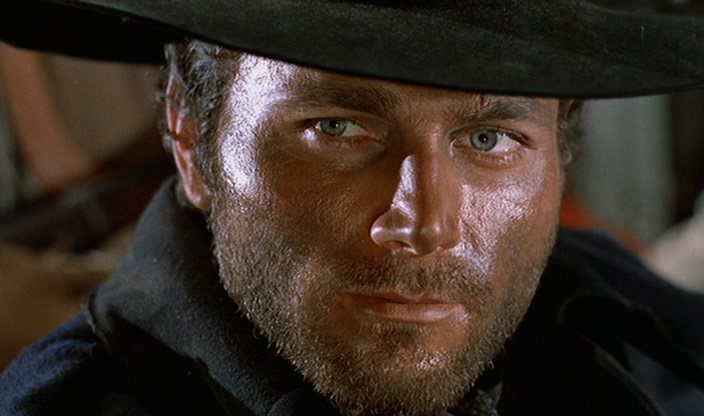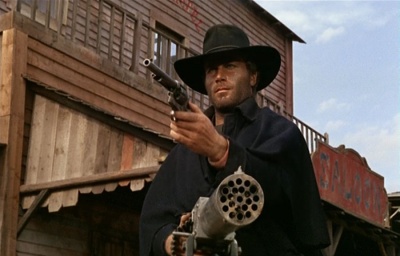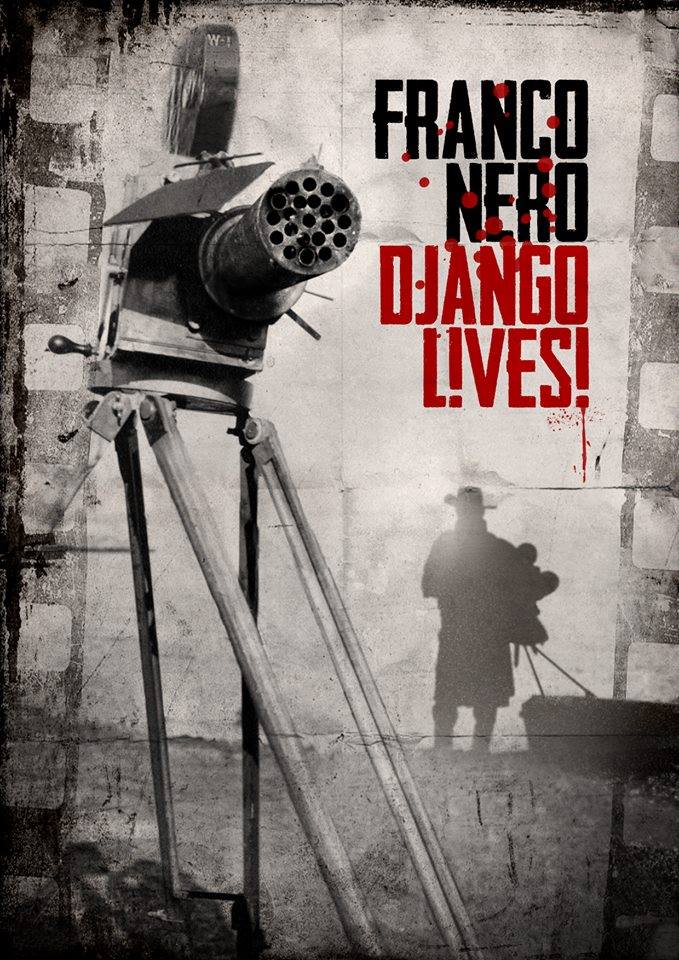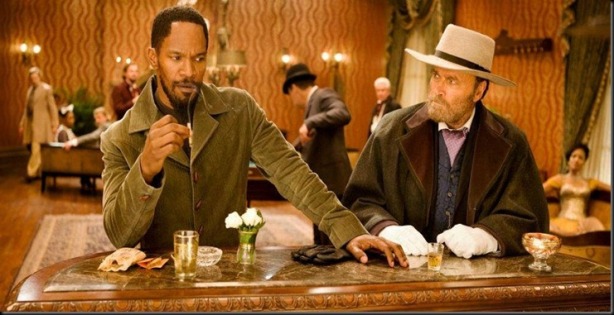
DJANGO is playing tonight at New York City’s Rubin Museum Of Art. Attendance is free but there is a minimum at the bar. Now THAT’S how you run a repertory screening, son.

Quick personal admission: Since it’s technically another spin on YOJIMBO and my allegiance has always been foremost to Sergio Leone’s A FISTFUL OF DOLLARS, I’m not as big a fan of DJANGO as I am of some others by director Sergio Corbucci (check out my DG review of THE GREAT SILENCE). But I’m in the minority there. 1966’s DJANGO was and still is immensely popular, and it incited several dozen sequels, both official and unofficial, in many languages, and many involving Quentin Tarantino. Takashi Miike made a Japanese Django film in 2007. Tarantino cameo’ed in that one, and then went and made a Django film himself. Last year’s mega-popular DJANGO UNCHAINED, a racial inversion of the Western genre starring Jamie Foxx as the one-named outlaw, was sure to make room for a cameo by the original Django, Franco Nero. (He’s the guy on the right, in case you aren’t already acquainted.)
Many people are at this point pretty familiar with the work of Sergio Leone, but one of the most prolific and terrific practitioners of “spaghetti” Westerns was Sergio Corbucci. Corbucci’s productivity was pretty amazing during the period he made DJANGO, which is the second of three Corbucci movies released in 1966 alone! Once you’ve seen the movies though, even more it’s fascinating to consider that Corbucci made NAVAJO JOE and DJANGO in the same year. Imagine if Dr. Dre dropped The Chronic while he was still doing his disco shit. (I haven’t seen JOHNNY ORO so I can’t yet comment on how it fits in.) NAVAJO JOE is extremely violent, but compared to DJANGO, it’s like a Diane Keaton romantic comedy. DJANGO is ridiculously hyper-gory, way that had never happened in a Western before (let’s put it this way: that ‘infamous’ ear scene from RESERVOIR DOGS was a direct lift from DJANGO.) Also, at least NAVAJO JOE cracks a smile – DJANGO is unremittingly grim. That may be due to the difference between the films’ two stars: Whatever else he may be, Franco Nero is no Burt Reynolds.

Franco Nero is a name that is going to come up many, many times during any discussion of this genre of movies. He’s had a long career in Italian films, where he still works, alongside detours into international cinema with films like ENTER THE NINJA and DIE HARD 2, and even a recent TV appearance on Law & Order:SVU (!) as a Dominique Strauss-Kahn manqué.
In terms of box office, Franco Nero actually was Italy’s version of Burt Reynolds, in a way – just not as funny. Nero appeared in a prodigious amount of Westerns and crime movies – he was the go-to guy for iconic Italian anti-heroes. It makes sense, I guess; he’s a striking guy who looks convincing in period costumes and can truly rock a mustache – he just isn’t always the most expressive actor (with some pleasing exceptions, as we’ll see down the road). He sure was game for all kinds of onscreen madness, though – DJANGO is notoriously, savagely violent. Its most famous image is that of the lead character dragging a coffin around with him everywhere he goes. I won’t tell you what’s in it, but let’s just say that it’s not good news for anybody who crosses the guy.

It was much written-about around the time of the most recent DJANGO film, but in the original, Django’s main adversaries are a group of bandits who wear shocking red hoods. In Corbucci’s film, the shock comes from color — the crimson of the fabric stands in contrast to the drab muddiness of the landscapes. The color red announces the unprecedented bloodiness of the film at hand. Tarantino foregrounds the racist implications of a band of evil men in hoods, which were present in the Corbucci film but not as the primary text of the film. To my understanding, the main cultural shift represented by Corbucci’s DJANGO is cinema’s turn towards overt and R-rated violence in the mid-1960s, a change which is reflected in America in the Westerns of Clint Eastwood, Arthur Penn, and Sam Peckinpah. Westerns were always violent, but before that time, they were more subtle, more genteel. Times changed. The popularity of films like DJANGO indicates that this change was hardly limited to the United States. The thirst for blood travels well.
— JON ABRAMS.

P.S. This news today, courtesy of the Hollywood Reporter: Franco Nero and Django will return in DJANGO LIVES!!!
- [THE BIG QUESTION] WHAT’S YOUR FAVORITE FEMALE ENSEMBLE IN MOVIES? - July 22, 2016
- [IN THEATERS NOW] THE BOY (2016) - January 24, 2016
- Cult Movie Mania Releases Lucio Fulci Limited Edition VHS Sets - January 5, 2016
Tags: Django, Franco Nero, Italy, Luis Bacalov, New York City, Quentin Tarantino, Screenings, Sergio Corbucci, Sergio Leone, Spaghetti, Takashi Miike, Westerns








No Comments